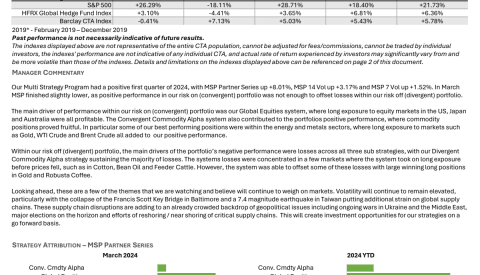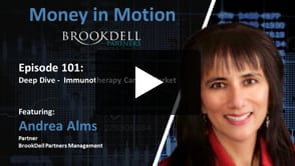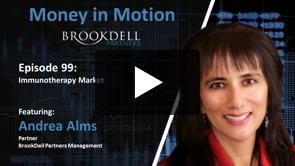Hedge Fund Dashboard:
Top Hedge Fund News, Member Posts, Hedge Fund Daily Indices and more!
Stockholm (HedgeNordic) – The Swedish corporate bond market is believed to be inefficient and dysfunctional from time to time. Taner Pikdöken of Atlant Fonder believes the market has long been dysfunctional and disaster-prone, not just when a crisis is breaking out. “Investors only focus on the risks after a volatile period, but the risks are always there,” says Pikdöken, who is one of the portfolio managers for Atlant’s first pure corporate bond fund, Atlant Högräntefond. “You just don’t see them when everything is trending upwards all the time.”
“The market is dysfunctional not only at the point of turmoil in March of last year, but the market had been dysfunctional even from 2016 onwards,” argues Pikdöken. “The volatility was just zero during that period, and it makes no sense that you have an instrument in an asset class that can generate 300-350 basis points above the risk-free without volatility,” he continues. “For us, that was a symptom of illiquidity.”
“The market is dysfunctional not only at the point of turmoil in March of last year, but the market had been dysfunctional even from 2016 onwards.”
From the top of the market to bottom in the early part of 2020, the Swedish corporate bond market experienced a drop in the region of 35 percent, which was larger than the drawdown in equity markets. “It is obvious that it makes no sense that an index constituting of mainly loans to high-grade companies would drop more than the equity market,” points out Pikdöken. “The main problem has been that the vast majority of Nordic corporate bond funds all do the same thing, at the same time.”
“When these funds get inflows, they have to go out and buy bonds. These funds are competing on the bid side for the same bonds,” explains Pikdöken. “When you have a market dominated by one seller and 20 buyers, for instance, the buyer that comes out victorious would be the buyer that pays the most for the same bond,” he continues. “That is what drove the market higher in recent years, but then we had March 2020.” For Pikdöken and his colleagues at Atlant Fonder, “it is very clear that these funds have a very significant mismatch between the liquidity profile that they need to offer their investors and the liquidity of their holdings.”
“It is very clear that these funds have a very significant mismatch between the liquidity profile that they need to offer their investors and the liquidity of their holdings.”
“We are very positive towards Nordic corporate bonds as an asset class.”Whereas the Nordic corporate bond market may be dysfunctional at times, the underlying bonds available in the market can exhibit attractive risk-return profiles. “We are very positive towards Nordic corporate bonds as an asset class,” emphasizes Pikdöken. “We just believe the market is extremely inefficient, occasionally forcing corporate bond fund managers to make irrational decisions of selling at the bottom and buying at the top.”
Hedge fund house Atlant Fonder has launched a fund, named Atlant Högräntefond, to pass on the benefits offered by corporate bonds and, at the same time, protect against the profound – yet occasional – dysfunctionality of the Nordic corporate bond market. Atlant Fonder has been successfully running this fixed-income strategy under the umbrella of other Atlant funds, with the March turmoil prompting the team to “carve out the successful pure corporate bond strategy and leave out other equity and derivatives strategies employed in the other funds.”
Atlant Högräntefond
The Atlant team pursues two main objectives with the recently-launched pure corporate bond fund. “The first one is that we are never a forced seller,” says Pikdöken, who manages Atlant Högräntefond alongside Nikos Georgelis and Anders Kullberg. “We have a variety of liquidity injection tools in the fund allowing us to draw liquidity in a time where we need it,” he continues. “The second objective involves using our cash on hand, which should always be between 30-50 percent of total assets, to buy attractively-priced bonds in times of market distress.”
“We get most of the exposure towards corporate bonds, not from owning the bonds directly, but from various credit market derivatives and index-derivatives.”
“You can get 100 percent synthetic exposure towards corporate bonds by using only a portion of the available capital under management.”“We get most of the exposure towards corporate bonds, not from owning the bonds directly, but from various credit market derivatives and index-derivatives,” explains Pikdöken. The derivatives strategies may involve buying investment-grade and high-yield index futures that give diversified exposure to U.S., European and Nordic corporate bond markets. “Instead of buying corporate bonds directly, we will buy the index on a forward or future basis. The advantage of these derivatives is that they are extremely capital-efficient,” says Pikdöken. “You can get 100 percent synthetic exposure towards corporate bonds by using only a portion of the available capital under management.”
The Difficult Nut to Crack
“At no point in time, we would have less than 30 percent of total assets in cash or cash equivalent instruments, which include extremely liquid instruments with no price risk,” elaborates Pikdöken. “The difficult thing has not been to find a setup that allows us to buy at the bottom,” he continues. “The trickier part is to have an exposure in the fund that is not only 50 percent invested all the time because we hold 50 percent in cash. That opportunity cost is way too massive to compensate for over a longer period. That has been the difficult nut to crack.”
“The trickier part is to have an exposure in the fund that is not only 50 percent invested all the time because we hold 50 percent in cash. That opportunity cost is way too massive to compensate for over a longer period.”
“These derivatives give us the ability always to have the fund 100 percent exposed or invested, but not by deploying a 100 percent of the cash,” continues Pikdöken. “We will always have cash, and we will always be ready to buy,” emphasizes the portfolio manager. “We will hold individual bonds, but we will only buy individual bonds that we believe offer a potential for excessive returns.” The Atlant team running the recently-launched fund are on the lookout for bonds “where we believe there is a very strong performance possibility in the near term. That is a more trading-intensive strategy that will add some extra value if we get those calls right.”
“We will hold individual bonds, but we will only buy individual bonds that we believe offer a potential for excessive returns.”
The combination of derivatives strategies offering exposure to a diversified pool of corporate bonds and an opportunistic strategy of buying discounted bonds is expected to, at least, match the broader market’s performance. “At the very worst, we will perform in line with the corporate bond market since our main exposure will come from index-closed positions,” says Pikdöken. “By definition, we will approximately perform like the index,” he adds. “What gives that quite excessive outperformance comes at the point of turbulence when everyone is a seller and we are a buyer.”
Quasi-Nordic
Atlant Högräntefond’s derivatives exposure stretches to Nordic, European and U.S. corporate bond markets, but the opportunistic buying of individual corporate bonds mainly focuses on the Nordics. “We will always have more than 50 percent of exposure to the Nordics, but every time we go out to spend cash reserves in a bad market, the vast majority of those will be in the Nordics just because this is where the market is most irrational,” explains Pikdöken.
“We will always have more than 50 percent of exposure to the Nordics, but every time we go out to spend cash reserves in a bad market, the vast majority of those will be in the Nordics just because this is where the market is most irrational.”
The exposure to the broader, more global corporate bond markets poses an advantage compared to a pure Nordic focus. “We are quite worried about the significant sector concentration in the Nordics, with the Swedish real estate market close to 60 percent of all issue volumes,” says Pikdöken. “Without having a view on the real estate market, it is never a good idea to have one market be so dominant.”
Good Content, Bad Packages on HedgeNordic.
Today's Hedge Fund Headlines:
Access Over 250K+ Industry Headlines, Posts and Updates
Join AlphaMaven
The Premier Alternative Investment
Research and Due Diligence Platform for Investors
Free Membership for Qualified Investors and Industry Participants
- Easily Customize Content to Match Your Investment Preferences
- Breaking News 24/7/365
- Daily Newsletter & Indices
- Alternative Investment Listings & LeaderBoards
- Industry Research, Due Diligence, Videos, Webinars, Events, Press Releases, Market Commentary, Newsletters, Fact Sheets, Presentations, Investment Mandates, Video PitchBooks & More!
- Company Directory
- Contact Directory
- Member Posts & Publications
- Alpha University Video Series to Expand Investor Knowledge
- AUM Accelerator Program (designed for investment managers)
- Over 450K+ Industry Headlines, Posts and Updates







